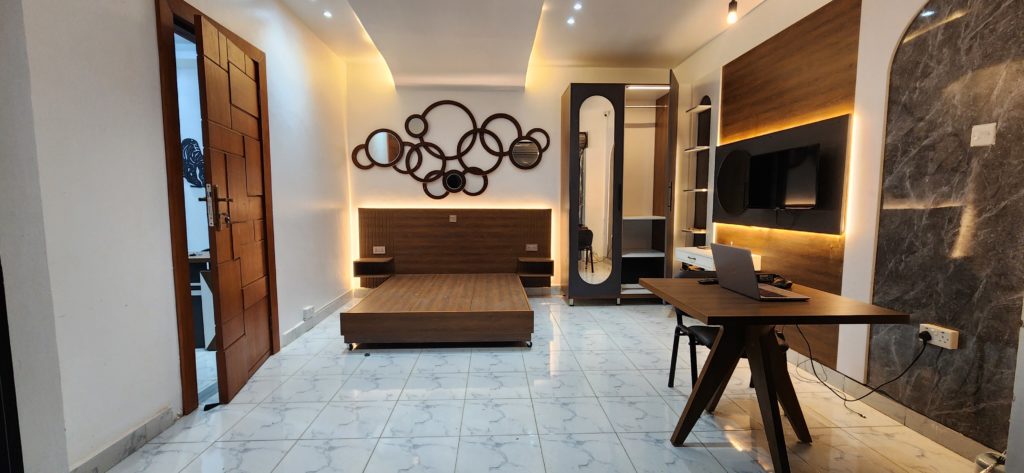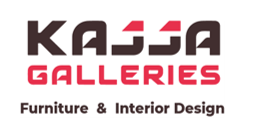About Kajja Galleries SMC Ltd
Kajja Galleries SMC Ltd is a Ugandan-based interior and furniture company specializing in custom furniture design and manufacturing. With a sharp eye for aesthetics and functionality, Kajja Galleries crafts high-quality, bespoke pieces tailored for restaurants, hotels, showrooms, and homes.
From sleek dining sets to full interior makeovers, the company prides itself on blending creativity with craftsmanship—delivering solutions that transform spaces and elevate experiences. Their mission is not just to sell furniture but to design lifestyle pieces that reflect the client’s personality and vision.
As demand increased, Kajja Galleries faced growing complexity in managing production, inventory, and client expectations. That’s when the shift to ERPNext began.
Challenges Before ERPNext Implementation
Despite its artistic excellence, Kajja Galleries encountered several operational hurdles that threatened efficiency and growth:
1. Project & Production Management
- Difficulty tracking multiple ongoing furniture projects (design, carpentry, finishing).
- No real-time status updates on progress stages—leading to miscommunication and delays.
- Challenges coordinating teams across design, procurement, and delivery.
2. Stock & Inventory Control
- Manual tracking of materials (timber, fabrics, metal, accessories) and finished goods.
- Uncertainty about what’s in stock, what’s been used, and what needs to be reordered.
- Overstocking and understocking leading to waste or work stoppages.
3. Accounting & Financial Balancing
- Disjointed invoicing and payment tracking for custom jobs.
- Lack of visibility into profit margins per order or project.
- No clear financial reporting for planning and budgeting.
4. Customer Relationship Management (CRM)
- Difficulty managing customer history, feedback, and follow-ups.
- No centralized system to track leads, quotes, and project-specific communication.
- Missed opportunities for repeat business due to inconsistent engagement.
5. Sales & Quotation Workflow (Implied)
- Custom pricing often calculated manually, risking errors.
- Quotes not standardized—leading to inconsistent client experiences.
6. Document and Design File Storage
- Design files and project references scattered in various folders or platforms.
- No system to link design drawings and customer instructions to specific jobs.
How ERPNext Solved Kajja Galleries’ Challenges
Implementing ERPNext brought structure, visibility, and efficiency to Kajja Galleries’ operations, allowing the creative team to focus more on delivering excellent craftsmanship.
Project Management Module
- Tracked all active furniture design and production projects with timelines and task assignments.
- Monitored progress at each stage (design, material prep, joinery, finishing, delivery).
- Reduced delays and improved team accountability.
Inventory Module
- Automated tracking of raw materials (e.g. wood, varnish, hinges) and finished goods.
- Set reorder levels and real-time stock availability alerts.
- Improved material planning, reducing wastage and procurement delays.
Accounting Module
- Linked sales and expenses directly to each project or order.
- Automated invoicing, payments, and expense recording.
- Generated financial reports (P&L, Cash Flow, Client Balances) to support smart decisions.
CRM Module
- Tracked leads, clients, and project history in a central place.
- Follow-up reminders, client notes, and contact records improved customer retention.
- Enabled targeted communication with high-value clients and project-based marketing.
Sales & Quotation Module
- Created professional, standardized quotations for custom furniture projects.
- Tracked quote approvals and turned them into orders with one click.
- Ensured pricing consistency and speed in the sales process.
Document Management (Core Feature)
- Centralized storage for design sketches, concept drawings, and client notes.
- Linked documents directly to projects, tasks, and quotes for easy access.
Impact of ERPNext on Kajja Galleries SMC Ltd
After implementation, the Kajja Galleries team experienced clear, measurable improvements:
1. Improved Project Turnaround
- Orders were fulfilled faster thanks to better task tracking and team coordination.
- Bottlenecks were reduced, and project timelines became more predictable.
2. Better Inventory Accuracy
- Reduced material shortages and improved procurement planning.
- Less waste, fewer lost items, and tighter stock control.
3. Financial Clarity
- Real-time profitability reports enabled better pricing and cost control.
- Easier payment tracking and improved cash flow.
4. Enhanced Customer Experience
- Clients received consistent quotes, updates, and follow-ups.
- Higher client satisfaction, leading to more referrals and repeat orders.
5. Greater Professionalism & Scalability
- ERPNext gave Kajja Galleries the tools to grow confidently, onboard more clients, and handle more complex projects—without losing control.
Conclusion
For Kajja Galleries SMC Ltd, ERPNext became more than just a system—it became the backbone of their growing custom furniture business. By automating project tracking, streamlining stock management, and improving customer relations, they have set a new standard in both operational excellence and client satisfaction.
With ERPNext, the artistry of their work is now matched by the precision of their business processes—laying a strong foundation for even greater innovation and growth.
Beautifully Crafted Furniture. Seamlessly Managed Operations.




